Omokjip Cityhall(오목집 시청)
1.1Km 2020-10-30
38, Namdaemun-ro, 1-gil, Jung-gu, Seoul
+82-2-3789-6882
A pig's trotter(s) specialty restaurant located near City Hall Station in Seoul. This restaurant's signature menu is braised pigs'' feet. Jokbal (pig's trotter) is a representative food loved by Koreans.
Gyodae Icheungjip Sicheong (교대이층집 시청)
1.1Km 2020-10-30
2F, 38, Namdaemun-ro, 1-gil, Jung-gu, Seoul
+82-2-318-6882
A barbecue specialty restaurant located near City Hall Station in Seoul. A store famous for flower-shaped pork belly. The most famous menu is grilled pork belly.
Jogeum (조금)
1.1Km 2021-03-29
62-4, Insadong-gil, Jongno-gu, Seoul
+82-2-725-8400
It is a Japanese-style hot pot rice store. The best menu at this restaurant is Hot Stone Pot Rice. This Korean dishes restaurant is located in Jongno-gu, Seoul.
Mercado Gwangjang (광장시장)
1.1Km 2024-05-17
Changgyeonggung-ro 88, Jongno-gu, Seúl.
Eunseong Hoejip (은성회집)
1.1Km 2021-03-29
88, Changgyeonggung-ro, Jongno-gu, Seoul
+82-2-2267-6813
You can enjoy Daegu maeuntang (fish stew), which is perfect for hangover. This restaurant's signature menu is sicy codfish stew. This Korean dishes restaurant is located in Jongno-gu, Seoul.
Noche Cultural de Jeongdong (정동야행)
1.1Km 2024-04-23
Sejong-daero 99, Jung-gu, Seúl
02-3396-4625
Dividido en 6 temas, entre ellos “Historias Nocturnas”, “Paisajes Nocturnos” y “Comida Nocturna”; este evento se celebra en diferentes espacios culturales. Algunos de ellos son el palacio Deoksugung, la Primera Iglesia Metodista de Jeongdong, el Museo de Arte de Seúl, el Museo Appenzeller Noble Memorial, el Teatro Jeongdong y la Legación Rusa de Corea. En este evento hay conciertos, funciones callejeras, teatro de títeres y demás espectáculos. También se realizan actividades prácticas relacionadas con el café, la elaboración de relojes de bolsillo y experiencias con vestimenta de principios del siglo XX en Corea.
Samseong Bbalgan Yangnyeom Sutbulgui (삼성 빨간양념 숯불구이)
1.1Km 2020-06-16
37, Namdaemun-ro 1-gil, Jung-gu, Seoul
+82-2-752-6449
Samseong Bbalgan Yangnyeomg has been famous for its charcoal-grilled dishes since 1972, and is especially well known for its spicy seasoning made from powdered red pepper, garlic, and ginger. Pork is mixed with the seasoning, giving it the characteristic red color and unique flavor, and then grilled over hot coals. This is the perfect restaurant for spicy food-lovers or those looking for a challenge.
Other dishes include jumulleok (marinated pork) and donggeurangttaeng (batter-fried meatballs). Jumulleok is made by seasoning fresh meat, whereas donggeurangttaeng is made by cutting the frozen meat into small pieces, and then marinating it. Older adults usually prefer jumulleok, while the young prefer donggeurangttaeng.
Insa-dong (인사동)
1.1Km 2024-05-17
Insadong-gil 62, Jongno-gu, Seúl
+82-2-734-0222
Insa-dong, situado en el corazón de la ciudad, es un lugar importante donde se intercambian artículos antiguos, pero valiosos. En la zona de Insa-dong hay una calle principal con un laberinto de callejuelas que se despliegan a cada lado. En aquellas callejuelas hay galerías, restaurantes tradicionales, casas de té tradicional y cafés. Las tiendas en Insa-dong son muy populares entre los grupos de todas las edades gracias al ambiente singular y único que ofrece cada una de ellas.
Las galerías de arte son el mismísimo latir del corazón de Insa-dong. En él hay un centenar de galerías donde se pueden contemplar todo tipo de ejemplares de las bellas artes de Corea, desde pinturas hasta esculturas. Entre las galerías de arte más famosas se encuentran la Galería Hakgojae, que funciona como el centro de arte folclórico; la Galería Gana, que promueve a muchos artistas de talentos prometedores, y el Centro de Arte Gana.
Las casas de té y los restaurantes complementan perfectamente las galerías de bellas artes. Al principio podrá resultar difícil hallarlos, pero si se toma el tiempo suficiente para recorrer las pequeñas calles serpenteantes, la “búsqueda” en sí puede llegar a ser divertida. En caso de que deseara elegir una sola casa de té de las cientas que hay aquí, Gwicheon podría llegar a ser el lugar ideal para conocer. La esposa del poeta Cheon Sang-byeong es su propietaria. El lugar no es muy grande, pero allí podrá ver fotos y libros de poetas famosos. El té de membrillo es el mejor de esta casa y es famoso por su fragancia.
Todos los domingos está prohibido el acceso de los coches a las calles del área de 10:00 a 22:00 por ordenanza municipal, de modo que el lugar se convierte en un espacio cultural. Precisamente este es el momento en el que los comercios se vuelcan fuera a exhibir sus artículos. No solo las tiendas que están aquí sino también gente de todas partes viene aquí e instala puestos de comercio ambulante. De todos estos se pueden mencionar, como ejemplo, los vendedores de dulces coreanos y los adivinos ancianos.
También se desarrollan interpretaciones de obras tradicionales y exhibiciones. Insa-dong es especialmente popular entre los turistas extranjeros, pues aquí pueden ver y vivir directamente la experiencia de la cultura tradicional coreana, y también porque pueden adquirir piezas de bellas artes. En la calle podrá probar melcochas coreanas y el tradicional pajeon (tortilla coreana), y ver a numerosos extranjeros sumidos en las alegres festividades.
Moonguesthouse [Korea Quality] / 문게스트하우스 [한국관광 품질인증]
1.1Km 2020-09-09
31-18, Samil-daero 32-gil, Jongno-gu, Seoul
+82-2-745-8008, +82-10-8704-9981
The Moon Guesthouse is situated near a number of interesting tourist destinations including Unhyeongung Palace (3min on foot), Bukchon Hanok Village (5min on foot), Changdeokgung Palace (5min on foot), and Changgyeonggung Palace (10min on foot). The guesthouse was named ‘moon’ (‘door’ in English) because it has many 176 doors and windows. Upon entering by the gate, visitors will see a ‘ㄷ’-shaped hanok building in the courtyard, in which a wooden bedstead and a table are placed. On the opposite of the hanok building there is a wall roofed with tiles engraved with Korean patterns such as deer, pine, turtle, etc. Flowers in the flowerbed lined up along the wall are in bloom and the bonsai are also well-kept in the house. Renovated and opened as a guesthouse in September 2011, Moon Guesthouse consists of a bonchae (main building) and a byeolchae (detached house). The rooms are decorated with red clay and hanji (traditional Korean paper handmade from mulberry trees), and have under-the-floor heating (ondol). Each room is equipped with an air-conditioner, and has a 40cm-thick layer of red clay over the ceiling for insulation, making the rooms cool in summer and warm in winter. The house has seven individual guestrooms and five modern bathrooms, but the entire building (bonchae or byeolchae) can be rented, too. In particular, the unhyeondang of the bonchae is very popular as it can be converted into one large space for special events, group workshops, etc. simply by opening all the sliding doors (Bunhapmun – Goryeo construction style). This room, which is decorated with a flower-patterned windscreen, a landscape painting, and calligraphy, has been used as a shooting location for various TV programs including KBS2’s TV reality program Man’s Qualification and its variety show The Human Condition. The guestrooms are also equipped with traditional furniture including a cabinet inlaid with mother-of-pearl. The guesthouse also provides a variety of experience programs from 11am to 3pm, including tea ceremony, wearing Hanbok (traditional Korean clothes), making kimchi and gochujang (red chili paste), playing a traditional musical instrument, making a rubbing of a stone inscription, calligraphy, drawing orchids on a fan, and so on. The house has about seventy hanbok and other clothing accessories, as well as a royal costume. Its calligraphy and drawing orchid programs are run directly by the owner, who used to work as a classical Chinese teacher at a high school.
Uga Yukhoe Bulgogi (우가육회불고기)
1.1Km 2021-03-19
198-2, Jong-ro, Jongno-gu, Seoul
+82-2-2286-6656
This Korean cuisine is located near Jongno 5(o)ga Station, Seoul. It is located at Yukhoe Alley in Gwangjang Market, one of Korea’s representative traditional markets. The representative menu is sliced raw beef.
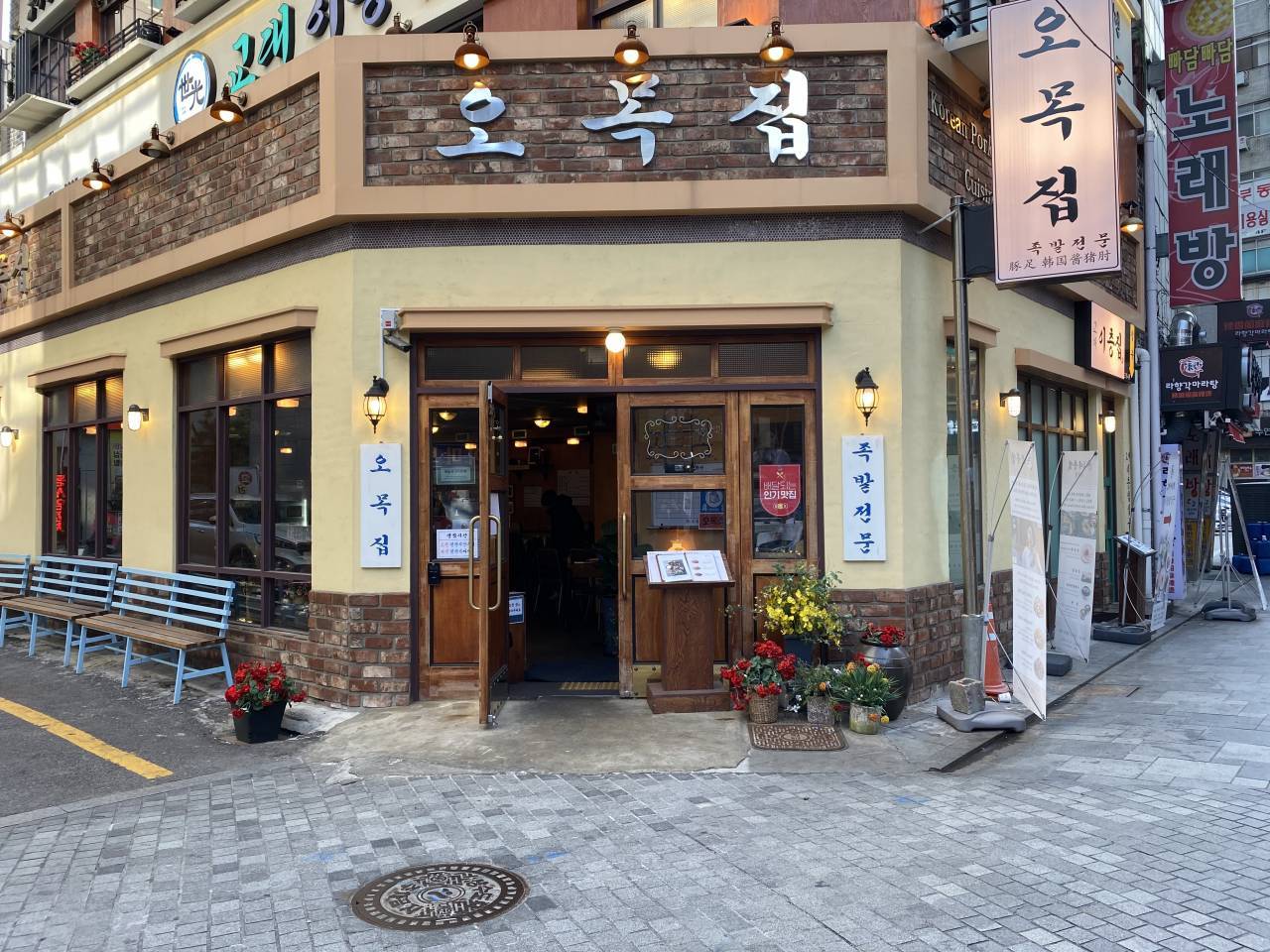
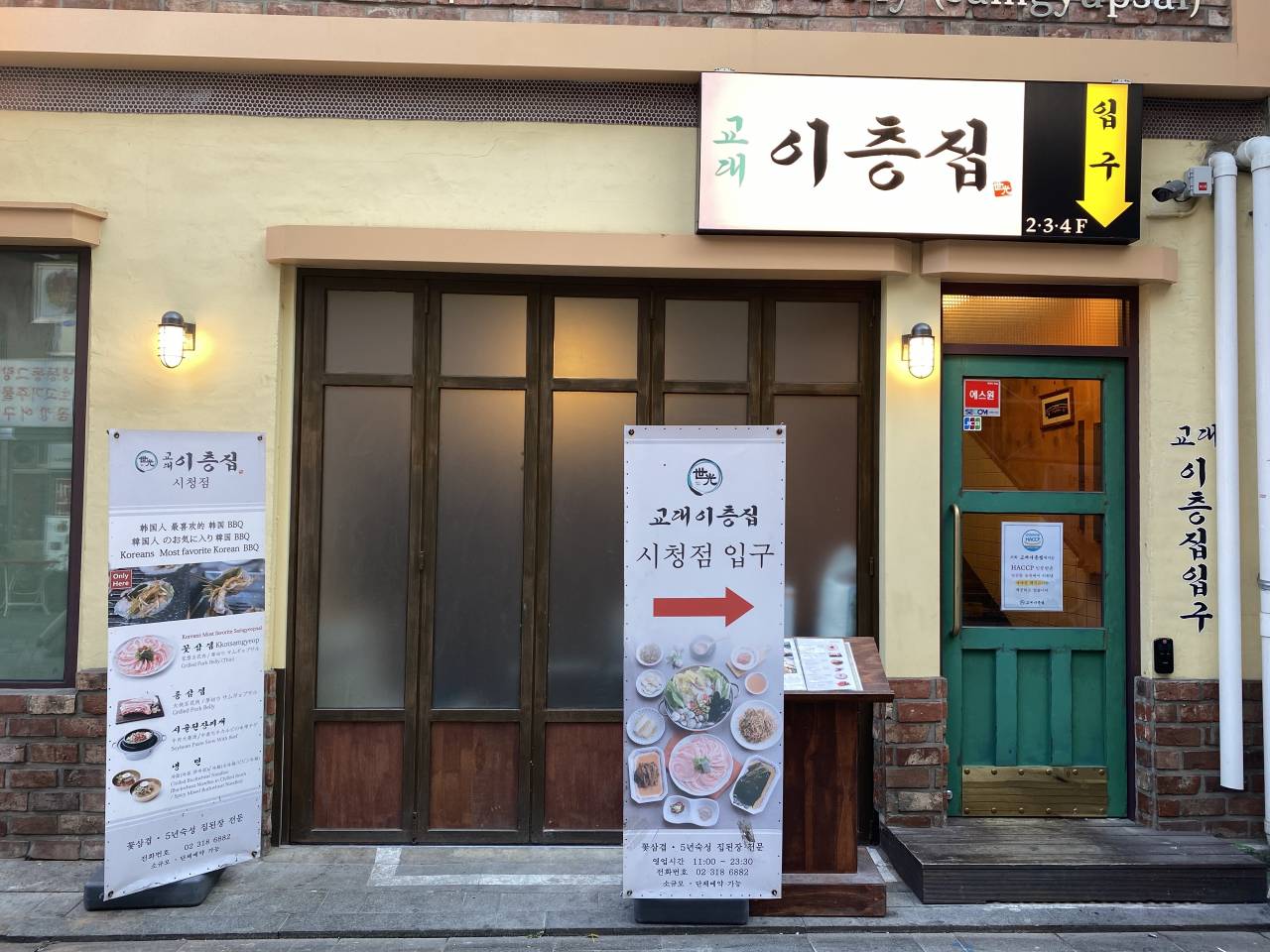
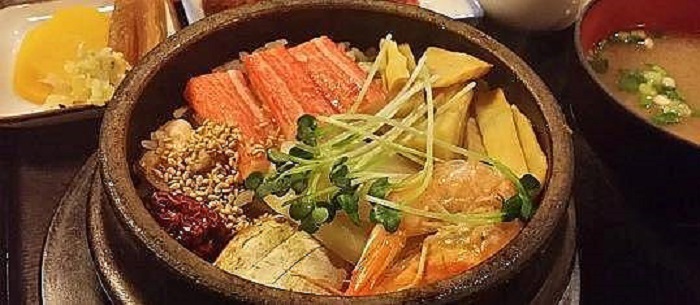
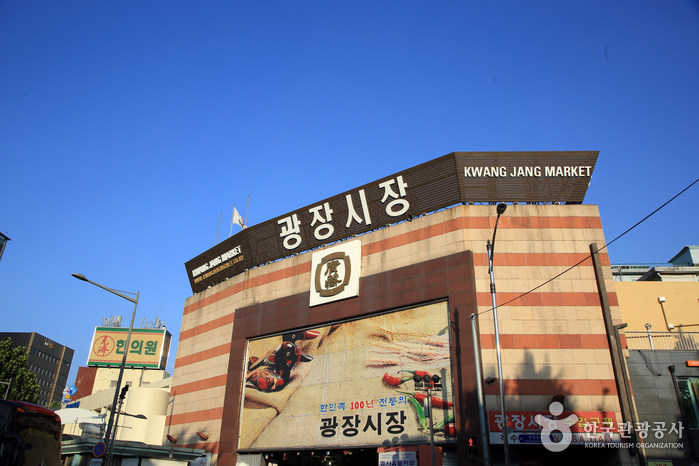
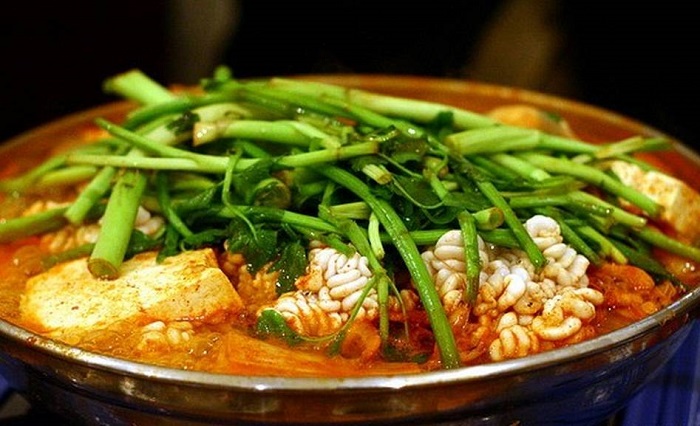
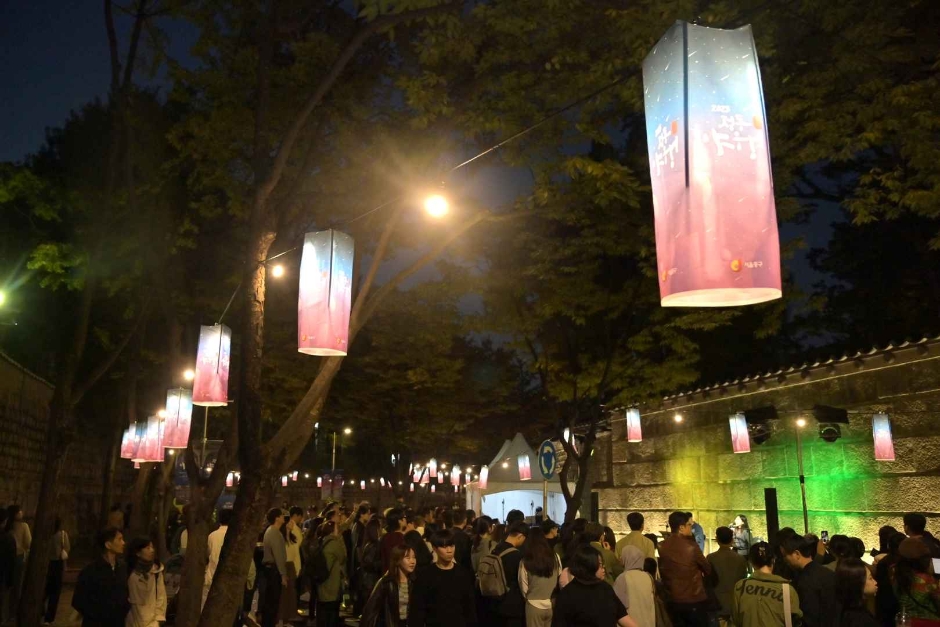
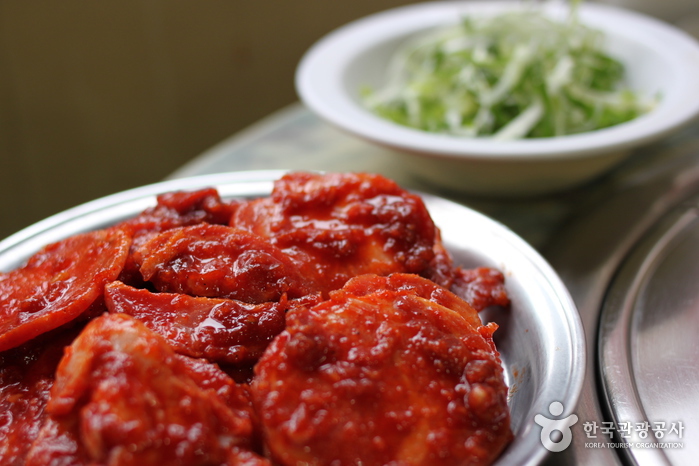
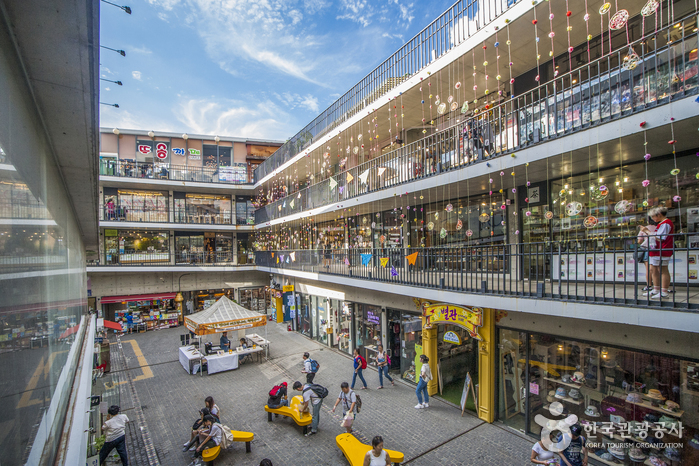
![Moonguesthouse [Korea Quality] / 문게스트하우스 [한국관광 품질인증]](http://tong.visitkorea.or.kr/cms/resource/09/2577509_image2_1.jpg)
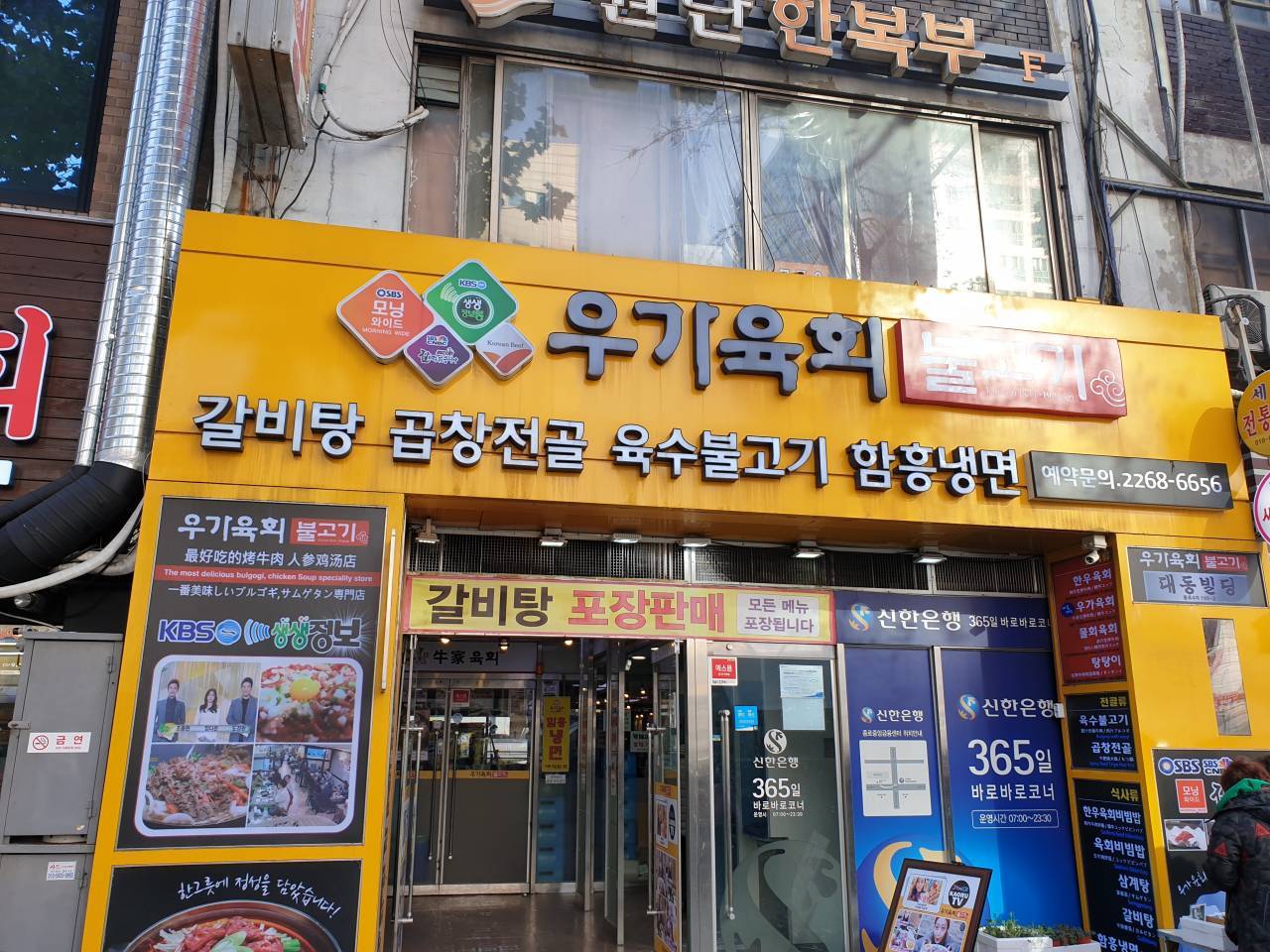
 Español
Español
 한국어
한국어 English
English 日本語
日本語 中文(简体)
中文(简体) Deutsch
Deutsch Français
Français Русский
Русский